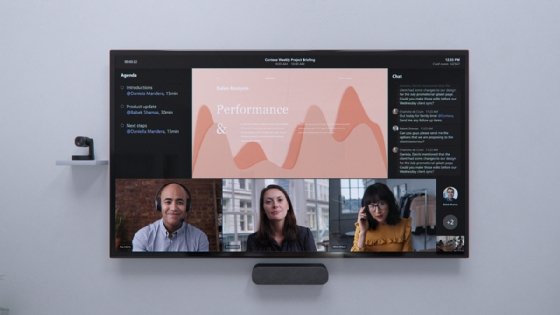
Getty Images
Microsoft updates Teams, Outlook for hybrid work challenges
Microsoft's upcoming hybrid work features will help remote and in-office employees schedule meetings, share presentations and collaborate more effectively.
Microsoft has introduced a slate of updates for Outlook, Teams and PowerPoint to ease companies' challenges with a hybrid workforce. Problems addressed by the product upgrades include when to attend in-office meetings, ineffective collaboration and unequal treatment of video meeting participants.
Microsoft plans to roll out the features in the second quarter of the year. The changes will help businesses transition from having people work from home full-time to splitting their workweek between the home and office as the pandemic wanes, the company said.
Many businesses expect to offer a hybrid-work option to attract employees in a tight labor market. A PwC survey of 1,200 office workers found that 55% preferred to work remotely three days a week.
The Outlook upgrade helps people decide when to stay home or head to the office. An RSVP feature lets employees see whether most of their colleagues will be physically present at a meeting for in-person collaboration. The feature will appear first on the web version of Outlook.
"[Managers] must make the office worth the commute," said Microsoft vice president Jared Spataro.
The Teams upgrade, which includes changes to the Teams Rooms conference room product, ensures both in-person and remote attendees feel like equals in a meeting.
Microsoft has added a front row to the conference room software that places remote workers at eye level with their in-office colleagues. The feature is currently in preview mode.

"[The view] should go a long way toward removing the barriers between people who are in office and at home," said Irwin Lazar, an analyst with research firm Metrigy.
Also, Teams will prompt people inside conference rooms to turn on their PC cameras, so at-home workers can see more of them to read body language.
Teams competitors Zoom and Cisco Webex have turned to AI to let remote workers read their conference-room colleagues' body language and facial expressions. Both have released features that individually frame in-room attendees.
Microsoft has changed the Teams whiteboard to let remote workers collaborate with their conference room peers. Meeting attendees will be able to use emoji to react to whiteboard content and bring up templates for such group tasks as brainstorming and project planning.
A Teams and PowerPoint integration will make it easier for employees to organize their workdays. Presenters can use the new recording studio in PowerPoint to create on-demand presentations and share them through Teams.
Last year, Microsoft doubled down on tightening integrations between Teams and other 365 software with the introduction of Loop. The application lets workers collaborate on Word and Excel content from within Teams. Microsoft added the same capability to Outlook this week.
The Teams update will include AI-driven software that records and analyzes presenters while they speak to warn them when they talk too fast, interrupt participants or should take a break to check in with the audience. Microsoft had previously launched similar PowerPoint software.
Microsoft will add live interpretation to Teams that supports up to 16 translators. Attendees will hear the audio from their chosen interpreter while the original audio plays at a lower volume in the background.
Microsoft is playing catch-up with its competitors on interpretation. Cisco Webex supports 110 interpreters, while Zoom allows 20 interpreters in a meeting.
Mike Gleason is a reporter covering unified communications and collaboration tools. He previously covered communities in the MetroWest region of Massachusetts for the Milford Daily News, Walpole Times, Sharon Advocate and Medfield Press. He has also worked for newspapers in central Massachusetts and southwestern Vermont and served as a local editor for Patch. He can be found on Twitter at @MGleason_TT.







